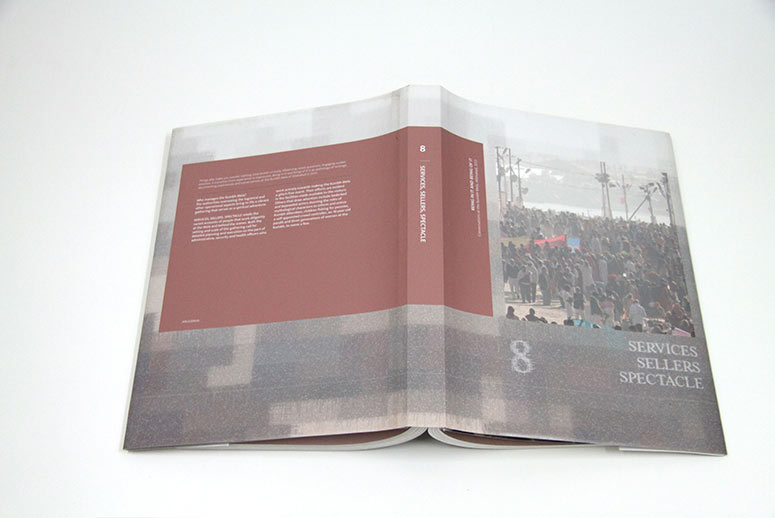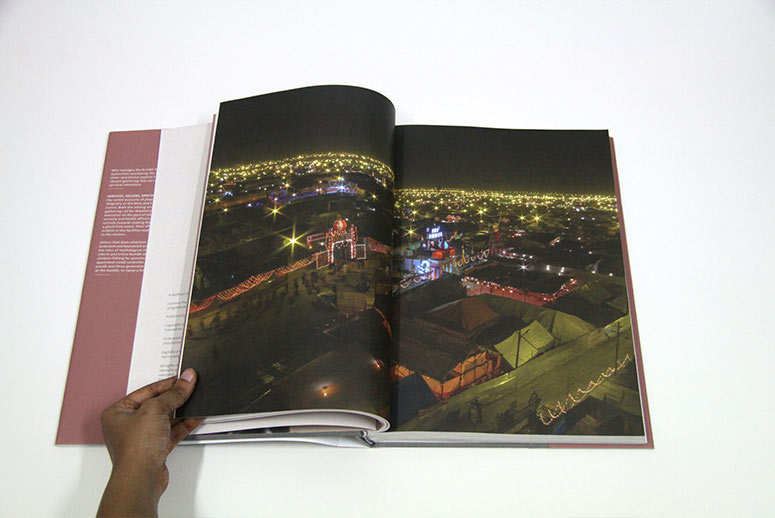- Voices in the book
- Preface
- Maps and Navigation
- Vol 1: Place, Time, Astronomy
- Vol 2: History, Mythology, Belief
- Vol 3: Ganga, Yamuna, Saraswati
- Vol 4: Seva, Sadhana, Satsang
- Vol 5: Guru, Disciple, University
- Vol 6: Abstinence, Penance, Charity
- Vol 7: Faith, Fate, Worship
- Vol 8: Services, Sellers, Spectacle
VOL 8: Services, Sellers, Spectacle
Who manages the Kumbh Mela? The authorities overseeing the logistical and other operational aspects bring to life a vibrant gathering that serves as a spiritual adventure.
Services, Sellers, Spectacle retells the varied accounts of people that work diligently at the Mela and behind the scenes. Both the setting and scale of the gathering call for detailed planning and execution on the part of administrative, security and health officers who work actively towards making the Kumbh Mela a glitch-free event. Their efforts are evident in the facilities made available to the visitors. Others that draw attention include bedecked and bejeweled actors donning the roles of mythological characters to inform and entice Kumbh attendees, children fishing for pennies, a self-appointed crowd controller, an 18-year-old pandit and three generations of women at the Kumbh, to name a few.
Contents of Services, Sellers, Spectacle
 Speak mysteries in your recesses (Poetic Verse)
Speak mysteries in your recesses (Poetic Verse) Mathieu Boisvert (Insight)
Mathieu Boisvert (Insight) Services, Sellers, Spectacle (Introduction)
Services, Sellers, Spectacle (Introduction) Ashutosh Kumar Dwivedi (Photo Story)
Ashutosh Kumar Dwivedi (Photo Story) Lending a hand (Character Story)
Lending a hand (Character Story) Kavindra Pratap Singh (Interview)
Kavindra Pratap Singh (Interview) Sir Mark Tully (Insight)
Sir Mark Tully (Insight)
 Ramesh Srivastava (Interview)
Ramesh Srivastava (Interview) Harbour in the tempest (Photo Story)
Harbour in the tempest (Photo Story) Dipped and dry (Photo Story)
Dipped and dry (Photo Story) Rasleela, Ramleela (Reflection)
Rasleela, Ramleela (Reflection) Fishing for pennies (Photo Story)
Fishing for pennies (Photo Story) 13.02.2013 (Diary Note)
13.02.2013 (Diary Note)
Excerpts From The Book: Sadhvi Bhagawati Saraswatiji (insight)
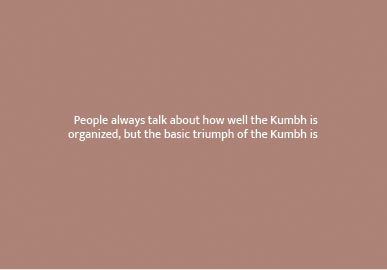

Excerpts From The Book: ashutosh kumar dwivedi (interview)

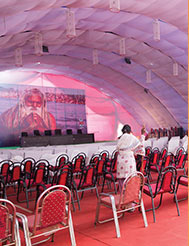

Ashutosh Kumar Dwivedi is the Additional Mela Officer, Sub-Mela Adhikari of the Kumbh Mela in Allahabad. He has undertaken the administration of the Mela, a large-scale, complex event, with full faith in the workings of God that guide him through it all.
Q When did the planning for this Kumbh start? A. About 1 year and 3 months ago.
Q What are the challenges in organizing and managing one of the biggest gatherings of people, in the world? A. There are challenges at every stage, especially with regulation. Then there are health and sanitation issues. People of so many sects, cultures, languages, territories and habits coming together makes it easy for terrorists to create chaos and take advantage of the situation. But then one thing is evident – this, big gathering of devotees is ‘God-managed’ not ‘man-managed’. It is otherwise unimaginable for such a large crowd to gather and go back peacefully, without the occurrence of any tragic or untoward incident. It really is a miracle!
Excerpts From The Book: kavindra pratap singh (interview)
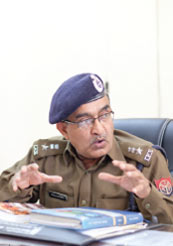
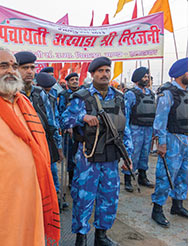

Kavindra Pratap Singh is the Head of Security at the Kumbh Mela. He, along with his team of police personnel, have the tough task of maintaining peace and order at the Kumbh, which is no mean feat, given the diversity and scale of the Mela, and its attendees.
Q What are the various security forces deployed at the Kumbh Mela? A To begin with, we have approximately 9000 civil police personnel. This component consists of the mounted police, the traffic police, the armed police, as well as the civil police. We also have the state police force consisting of the fire unit, the radio and communication team, the anti-terrorist teams, the surveillance team, and civil police personnel. The border-states like Uttaranchal have given us 2 companies along with 150 additional men. We also have forces of the Pradeshik Armed Constabulary (PAC) from Uttar Pradesh, the paramilitary forces and the river police teams, which include 6 companies of the state river police. We have 1 company of the National Disaster Response Force (NDRF) and 1 company of the National Disaster Management Authority (NDMA), that includes 150 odd men with boats and rescue operators. We have the Central Paramilitary Force (CPMF), Central Reserve Police Force (CRPF), Rapid Action Force (RAF) teams, the Border Security Force (BSF), the Central Industrial Security Force (CISF), Sashastra Seema Bal (SSB) and the Indo-Tibetan Border Police (ITBP), which brings the total number of companies to about 60, with 6000 odd personnel. Additionally we also have our force of about 4500 home guards. In total the strength of the security force at the Kumbh Mela is approximately 19,000 in number. This number also includes around 500 intelligence personnel who are security officers in plain clothes. They focus mainly on local, political formations and VIP movements.
Excerpts From The Book: Ramesh Srivastava (interview)
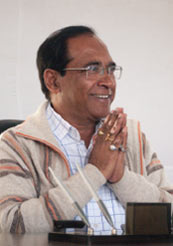
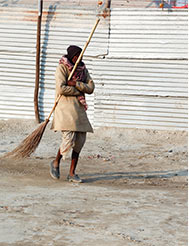

Ramesh Srivastava is the Additional Director in the Health and Sanitation department of the Kumbh Mela in Allahabad. He hopes and plans for a healthy and hygienic Mela, with reduced dependency on manpower.
Q Are there any precautions taken for the health and safety of these cleaners and sweepers as well? A. Cleaners and sweepers have been given masks, gum boots and hand gloves for their own safety.Unfortunately they are not accustomed to boots, so they wear all of it only for some time and then you can find their boots kept at the shauchalaya. It is like telling you that if you wear gloves and make rotis, you will not get burnt. But I have not seen a single woman who wears gloves and makes rotis. They just cannot do it. This is similar. I have however seen the masks being used and in fact in their training it has been emphasized that they must use a mask to avoid health dangers and diseases such as swine flu. However the substances that they use for cleaning, like bleaching powder, are harmless.
